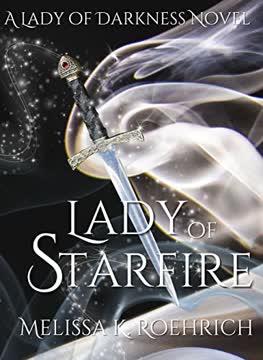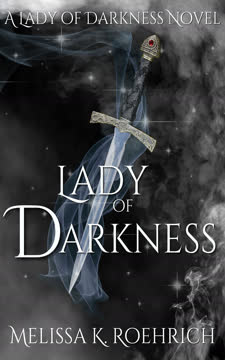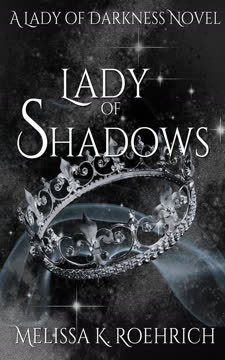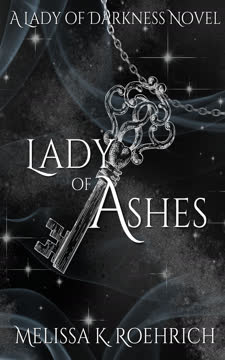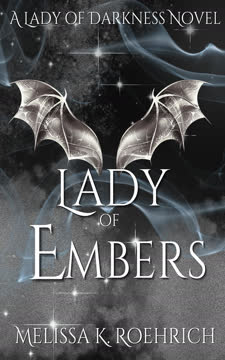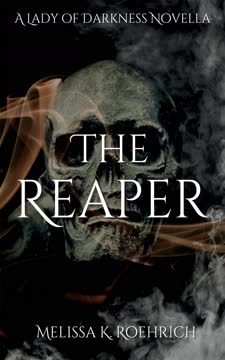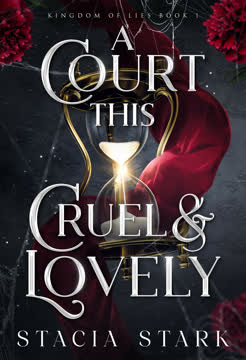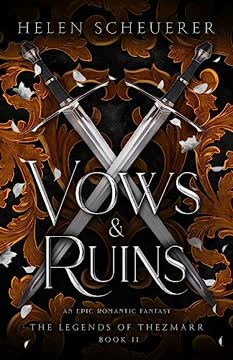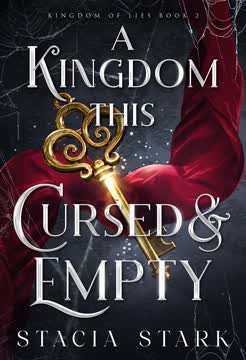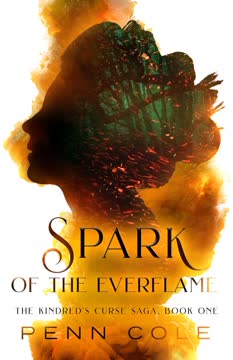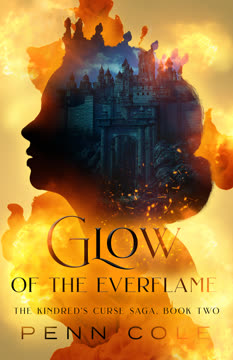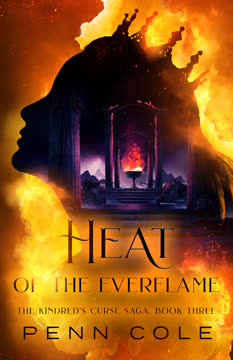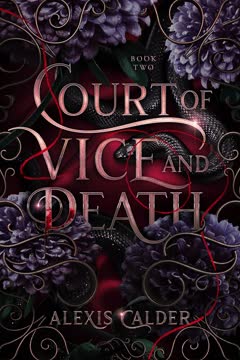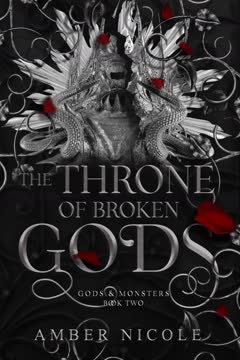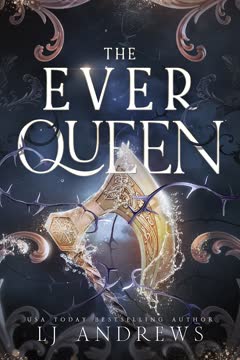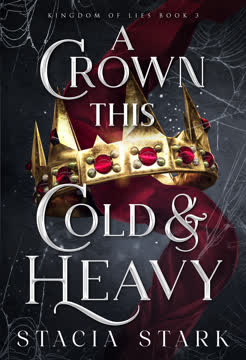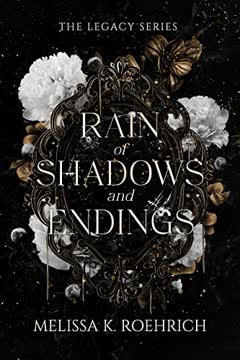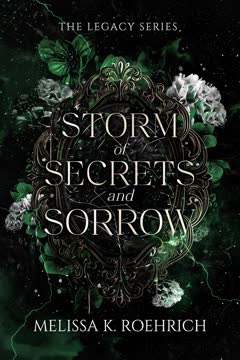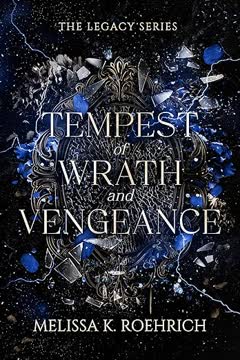Plot Summary
Shadows and Sacrifice
The story opens with Scarlett, now Queen of the Fae Courts, grappling with the immense weight of her destiny. The world teeters on the brink of destruction as ancient powers stir, and the gods' games threaten to consume everything. Scarlett's journey is marked by sacrifice—her own and those she loves. She is forced to confront her mother, Saylah, a goddess who has manipulated events for centuries, and to accept that her own power, a blend of Fae, goddess, and World Walker, is both a gift and a curse. The cost of saving the world is steep, and Scarlett must decide how much she is willing to pay.
The Goddess's Bargain
Saylah, goddess of night and shadows, emerges as a pivotal figure, her motives shrouded in centuries of loss and regret. She bargains with the Sorceress Gehenna and the Fae Queen Eliné, seeking a way to escape the world's prison and keep Achaz, the god of beginnings, at bay. Saylah's bargains are always double-edged, demanding sacrifices from others—especially her daughter, Scarlett. The goddess's inability to love in a mortal way is contrasted with her desperate attempts to protect her children and the world, even as her actions set the stage for further tragedy.
Broken Bonds, New Power
Scarlett's relationships with Sorin, her twin flame, and her found family are strained as she absorbs new powers and responsibilities. The twin flame bond, once a source of strength, is broken and reforged through sacrifice. Talwyn, the dethroned Fae Queen, gives up her magic to restore Sorin's power, symbolizing the theme of selfless love. The group's bonds are tested by secrets, betrayals, and the ever-present threat of the Maraans and their seraph armies.
The Queen's Ultimatum
Refusing to be a pawn, Scarlett issues an ultimatum to Saylah: restore Sorin's power or face the consequences. This act of defiance marks Scarlett's transformation from victim to sovereign, as she claims agency over her destiny. The confrontation exposes the manipulations of the gods and the true nature of the lock—a powerful artifact tied to the fate of the world. Scarlett's willingness to challenge even the gods sets her apart as a leader.
The Mortal King's Choice
Callan, the mortal king, is forced to choose between his own life and the safety of his people. The Maraans' life-bond magic ties the fate of the mortal kings to their own, making any attempt to kill the Maraans a death sentence for Callan, Drake, and Hale. Callan's willingness to sacrifice himself for the greater good is a turning point, highlighting the theme of leadership as service and the heavy price of freedom.
The Reforging of Chaos
The lock, created from the Chaos of a World Walker named Korra, is the key to saving or dooming the world. Scarlett, with the help of her allies, channels her unique blend of powers to reforge the lock and alter the mirror gates—portals between worlds. This act draws the attention of Achaz and the gods, but also grants Scarlett the ability to control who enters and leaves the realm. The process nearly destroys her, but she is saved by the combined efforts of her family and the sacrifice of her mother's remaining power.
The Reaper's Mercy
Rayner, the Ash Rider, is given a new purpose as he adopts Tula, a powerful shifter child. This act of chosen family and protection is formalized through a magical bond, ensuring Tula's safety from those who would use her. Rayner's journey from haunted warrior to guardian reflects the series' emphasis on found family and the healing power of love.
The Wraiths' Last Dance
Scarlett, Nuri and Juliette—the Wraiths—track Alaric, their former master, to his lair. Using cunning, shared power, and the lessons of their brutal upbringing, they drain Alaric of his magic and end his life. The scene is both cathartic and tragic, as the sisters reclaim agency over their story but must part ways. Nuri, burdened by her actions, chooses exile with Mordecai, while Juliette assumes leadership of the Witch Kingdoms.
The Lock and the Gate
With the help of Hazel, the High Witch, and the reforged Semiria rings, Scarlett and her allies destroy the portal key, severing Achaz's last foothold in the world. The act is not without cost—Hazel Fades, leaving Cassius to mourn the mother he barely knew. The mirror gates are altered, and Scarlett becomes the guardian of the realm, controlling access and ensuring the world's safety.
The World Walker's Awakening
Scarlett's journey culminates in her acceptance of the World Walker's power. She becomes a being of Chaos, capable of creation and destruction, and is recognized as the High Queen of the World Walkers. The spirit animals, revealed to be former World Walkers, return to the gods, but Scarlett vows to one day free them. The cost of power is made clear—Scarlett is forever changed, but she uses her gifts to protect rather than dominate.
The Battle for Windonelle
Alaric and the Maraans launch a devastating attack on Windonelle, targeting the mortal kings and their people. Scarlett and her allies, including the spirit animals, fight a desperate battle. The Chaos within Scarlett, guided by the spirit animals, turns the tide, but the true victory comes from sacrifice, unity, and the refusal to abandon hope.
The End of the Maraans
Through cunning, sacrifice, and the combined might of the Fae, mortals, and their allies, the Maraans are finally destroyed. Balam, Tava and Drake's adoptive father, sacrifices himself to break the life-bond and save the mortal kings. The world is saved, but the scars of war remain.
The Price of Freedom
In the aftermath, the survivors mourn their losses—Sawyer, Hazel, Callan (almost), and countless others. The theme of grief is balanced by hope, as new leaders rise and old wounds begin to heal. The Fae Courts, mortal kingdoms, and magical territories are united in a fragile peace, with Scarlett and Sorin at the center.
The Reunion of Stars
The extended family—Scarlett, Sorin, Eliza, Razik, Rayner, Cassius, Cyrus, and others—reunite in the Fire Court. Bonds are reforged, new relationships blossom, and the characters find solace in each other. The den becomes a symbol of home, laughter, and the enduring power of love.
The High Queen's Farewell
Nuri and Juliette leave the realm, seeking redemption and peace in another world. Juliette becomes High Witch, and the Wraiths part ways, their bond unbroken but forever changed. Scarlett's farewell is bittersweet, marking the end of an era and the beginning of a new one.
The New Order
The world settles into a new order. Talwyn finds purpose as Azrael's consort, Eliza and Razik build a life together, and the mortal kingdoms are restored. The spirit animals depart, but hope remains. Scarlett and Sorin, now High Queen and Prince, lead with compassion and strength, determined to protect the peace they fought so hard to win.
The Brightest Stars
The story closes with the birth of Briar and Ashtine's twins, Nakoa and Sawyer, symbolizing renewal and the promise of a brighter future. Scarlett reflects on the journey, the sacrifices made, and the enduring power of hope. The stars, once distant and cold, now shine brighter than ever, a testament to the resilience of those who dared to dream.
Hope for the Dreamers
In the final moments, Scarlett and her family gather, celebrating not just survival but the possibility of happiness. The world is forever changed, but the dreamers remain, ready to face whatever comes next. The message is clear: hope is for the dreamers, and the brightest stars are those who refuse to let the darkness win.
Characters
Scarlett Sutara Aditya
Scarlett is the central figure of the story, a woman shaped by trauma, manipulation, and the relentless demands of fate. Born of a goddess and a mortal king, she is both Fae and divine, ultimately becoming the High Queen of the World Walkers. Scarlett's journey is one of self-acceptance, as she learns to wield her immense power without losing her humanity. Her relationships—with Sorin, her twin flame; her siblings; and her found family—anchor her, even as she is forced to make impossible choices. Scarlett's defiance of the gods and her refusal to be a pawn mark her as a true leader, one who redefines what it means to be chosen.
Sorin Aditya
Sorin is Scarlett's husband, twin flame, and the Fire Prince. His journey is one of loss and restoration, as he sacrifices his magic for Scarlett and is later restored through Talwyn's selfless act. Sorin's unwavering love and support are Scarlett's anchor, and his own struggles with mortality and power mirror the story's themes of sacrifice and resilience. As a leader, Sorin is compassionate, strategic, and fiercely protective of his family.
Saylah
Saylah is a complex figure—aloof, manipulative, and yet deeply wounded by centuries of loss. Her bargains and secrets drive much of the plot, and her inability to love in a mortal way is contrasted with her desperate attempts to protect her children and the world. Saylah's ultimate sacrifice—giving up her Chaos to save Scarlett—redeems her in the eyes of her daughter and the reader, highlighting the story's theme of love as sacrifice.
Cethin Sutara
Cethin, Scarlett's brother, is bound to the Wards of Avonleya, unable to leave without risking his life and the safety of his people. His journey is one of guilt, secrecy, and eventual redemption, as he learns to trust his sister and accept his own worth. Cethin's relationship with Kailia and his willingness to sacrifice for his kingdom underscore the story's emphasis on chosen family and the burdens of leadership.
Eliza
Eliza is the Fire Court General, a woman marked by trauma and resilience. Her relationship with Razik, her acceptance of the twin flame bond, and her struggle with her own limitations make her one of the most relatable characters. Eliza's journey is about reclaiming agency, finding love, and learning to hope again, even in the face of loss.
Razik Greybane
Razik is Cethin's Guardian and Eliza's twin flame. His stoic exterior hides deep wounds and a fierce loyalty to those he loves. Razik's journey is one of self-acceptance, as he learns to embrace his role as protector and partner. His relationship with Eliza is a testament to the healing power of love and the importance of choice.
Rayner
Rayner is a figure of both violence and tenderness, haunted by his past but redeemed through his adoption of Tula. His journey from solitary warrior to devoted guardian reflects the story's themes of found family and the possibility of redemption. Rayner's loyalty to Scarlett and the others is unwavering, and his willingness to fight for those he loves is a source of strength for the group.
Cassius
Cassius is Scarlett's Guardian and Cyrus's lover. His journey is marked by trauma, loss, and the search for belonging. Cassius's relationship with Cyrus is a source of healing for both, and his role as Hand-to-the-Queen underscores the importance of loyalty and service. Cassius's struggle with his own worth and his eventual acceptance of love mirror the story's central themes.
Cyrus
Cyrus is a character defined by loss—of his twin flame, his friends, and his sense of self. His journey through trauma, manipulation by the Sorceress, and eventual healing through love and family is one of the most poignant in the story. Cyrus's wit, resilience, and capacity for love make him a vital part of the found family, and his relationship with Cassius is a beacon of hope.
Nuri and Juliette
Nuri and Juliette, Scarlett's sisters, are both products of Alaric's brutal training and survivors in their own right. Nuri's journey is one of exile and redemption, while Juliette's ascension to High Witch marks a new beginning. Their bond with Scarlett is unbreakable, and their final confrontation with Alaric is both cathartic and tragic.
Plot Devices
The Lock and the Mirror Gates
The lock, created from the Chaos of a World Walker, and the mirror gates, portals between worlds, are central plot devices. They symbolize both the possibility of escape and the danger of invasion. The quest to find, reforge, and ultimately destroy these artifacts drives much of the plot, and their connection to the gods and World Walkers adds layers of myth and destiny. The lock's response to Scarlett's unique power is a metaphor for her role as a bridge between worlds and as a force for change.
Sacrifice and the Cost of Power
Throughout the story, characters are forced to make sacrifices—of magic, love, and even life itself. The theme is embodied in the transfer of power from Talwyn to Sorin, Saylah's loss of her Chaos, and Callan's willingness to die for his people. The narrative structure uses these sacrifices to build tension, create emotional stakes, and underscore the message that true leadership and love require giving up something precious.
Found Family and Chosen Bonds
The story repeatedly emphasizes the importance of chosen family—those who stand by you, fight for you, and love you despite your flaws. The bonds between Scarlett, Sorin, Eliza, Razik, Rayner, Cassius, Cyrus, and others are tested and strengthened through adversity. The adoption of Tula by Rayner, the twin flame and Source bonds, and the Wraiths' sisterhood all serve as plot devices to explore themes of loyalty, healing, and belonging.
The Manipulations of the Gods
The gods, especially Saylah and Achaz, are constant forces in the background, manipulating events and demanding sacrifices. Their bargains, secrets, and inability to love in mortal ways create conflict and drive the plot. The story uses foreshadowing and revelations about the gods' true motives to challenge the idea of destiny and to empower the characters to claim agency over their own lives.
The Cycle of War and Renewal
The Everlasting War, the battles against the Maraans, and the repeated destruction and rebuilding of the world serve as both literal and symbolic plot devices. The narrative structure uses cycles of loss and renewal to explore the possibility of hope, the necessity of change, and the resilience of those who survive. The birth of Briar and Ashtine's twins at the end is a powerful symbol of this theme.
Analysis
Lady of Starfire is a sweeping, emotionally charged fantasy that explores the cost of power, the meaning of sacrifice, and the enduring strength of found family. At its heart, the story is about reclaiming agency in a world shaped by the manipulations of gods and the scars of trauma. Scarlett's journey from pawn to High Queen, and the journeys of her allies, reflect a modern sensibility: true leadership is not about destiny or blood, but about the choices we make and the people we choose to stand beside. The novel interrogates the idea of fate, ultimately empowering its characters to break cycles of war and renewal and claim a future of their own making. Through its intricate world-building, complex relationships, and unflinching examination of grief and hope, Lady of Starfire offers a message that resonates in our own world: the brightest stars are those who refuse to let the darkness win, and hope is always worth fighting for.
Last updated:
FAQ
0. Synopsis & Basic Details
What is Lady of Starfire about?
- A Queen's Burden: Lady of Starfire, the fifth book in the Lady of Darkness series, plunges Scarlett Sutara Aditya, Queen of the Fae Courts, into a desperate fight to save her world, Halaya, from an ancient, inter-realm war orchestrated by manipulative gods. She must confront her divine mother, Saylah, and master her own burgeoning powers—a unique blend of Fae, goddess, and World Walker Chaos—to find a mythical 'lock' and prevent the god Achaz from destroying their realm.
- Sacrifice and Survival: The narrative follows Scarlett and her diverse 'found family'—including her twin flame Sorin, her brother Cethin, and loyal warriors like Eliza, Razik, Rayner, Cassius, and Cyrus—as they navigate betrayals, devastating losses, and impossible choices. Their quest involves retrieving ancient artifacts, battling formidable Maraan Lords and seraph armies, and confronting the deep-seated traumas of their pasts, all while striving to protect their people and redefine their destinies.
- Redefining Fate: Ultimately, the story is a high-stakes fantasy epic about agency, love, and the power of chosen bonds. Scarlett must unite disparate factions, challenge divine decrees, and make profound sacrifices to secure a future where her world is free from manipulation, culminating in a climactic confrontation that reshapes the very fabric of their reality and sets the stage for a new era of peace and self-determination.
Why should I read Lady of Starfire?
- Deep Emotional Resonance: Readers should dive into Lady of Starfire for its profound emotional depth and psychological exploration of characters. The novel doesn't shy away from the brutal realities of war and trauma, offering a raw, honest look at grief, resilience, and the healing power of love and chosen family. It's a story that makes you feel every sacrifice and triumph alongside the characters.
- Intricate World-Building & Magic System: Melissa K. Roehrich crafts a rich, multi-layered world where ancient gods, powerful Fae, dragon shifters, witches, and mortals collide. The magic system, particularly the concept of Chaos, twin flame bonds, and unique abilities like World Walking, is both complex and fascinating, constantly revealing new layers that keep the reader engaged and eager for more.
- Empowering Themes of Agency: At its core, Lady of Starfire is a powerful narrative about defying destiny and reclaiming agency. Scarlett's journey from a pawn of the gods to a High Queen who dictates her own fate is incredibly inspiring. It's a story for anyone who loves strong female leads, intricate political maneuvering, and the triumph of personal will over predetermined paths.
What is the background of Lady of Starfire?
- Inter-Realm Conflict & Ancient History: The world of Halaya is caught in the Everlasting War, a conflict spanning multiple realms between powerful gods like Achaz (god of beginnings) and Arius (god of endings). Halaya was originally a sanctuary for Legacy (demigod descendants) and Fae, but ancient betrayals and manipulations by figures like the Sorceress Gehenna and the Maraan Prince Alaric led to its isolation and vulnerability.
- The Wards and Their Cost: Centuries ago, powerful wards were erected around Avonleya and other territories to protect them, but these came at a severe cost, severing connections between Fae and Legacy, and trapping powerful beings like Saylah. The narrative reveals that these wards were not just protective but also tools of manipulation, with hidden caveats and life-binding consequences for those who enacted or broke them.
- Legacy of Trauma and Hidden Truths: The characters are deeply affected by generations of hidden histories and personal traumas. Scarlett's upbringing in the Black Syndicate, Cyrus's torture by the Sorceress, and the suppressed pasts of characters like Eliza and Razik all contribute to their motivations and struggles. The story gradually unearths these buried truths, revealing how past events continue to shape the present war and the characters' personal destinies.
What are the most memorable quotes in Lady of Starfire?
- "I will come for you. I will find you. I will always find a way.": This declaration from Sorin to Scarlett encapsulates their unwavering twin flame bond and his fierce loyalty, highlighting the theme of enduring love against all odds. It's a promise that transcends realms and challenges, reinforcing his role as her ultimate anchor.
- "You are the master of nothing anymore, Alaric. Not a fellowship of assassins. Not a land of mortals. Not an army of seraphs. Not my sisters. Not me. You are not even the master of your own death. You are nothing. A prince without a throne. A failure. The game is over. I won.": Scarlett's chilling monologue to Alaric during their final confrontation perfectly illustrates her transformation from his "Wraith" to a powerful High Queen, reclaiming her agency and delivering a devastating psychological blow. It's a powerful moment of triumph and vengeance.
- "Always remember, Starfire, hope is for the dreamers.": Saylah's parting words to Scarlett are a poignant reflection on the nature of hope in a world scarred by war and sacrifice. It's a bittersweet sentiment that acknowledges the harsh realities while still encouraging the pursuit of a better future, resonating with the overarching themes of resilience and the power of belief.
What writing style, narrative choices, and literary techniques does Melissa K. Roehrich use?
- Multi-POV Narrative: Roehrich employs a multi-point-of-view narrative, shifting between key characters like Scarlett, Sorin, Eliza, Cyrus, Callan, and Talwyn. This choice provides a panoramic view of the unfolding war, allowing readers deep insight into each character's internal struggles, motivations, and emotional responses, enriching the overall understanding of the complex plot and character connections.
- Emotional Intensity & Raw Dialogue: The writing style is characterized by its raw emotional intensity, often conveyed through visceral descriptions of pain, grief, and rage, balanced by moments of profound love and tenderness. Dialogue is sharp, often laced with sarcasm and wit, reflecting the characters' hardened exteriors and deep bonds, while also revealing their vulnerabilities.
- Symbolism & Foreshadowing: Roehrich masterfully uses symbolism, such as the recurring motif of stars and darkness, the significance of various Marks (Source, Twin Flame, Bargain, Curse), and the elemental powers, to deepen thematic meaning. Subtle foreshadowing, often through prophetic dreams, ancient texts, or seemingly throwaway lines, builds suspense and hints at future revelations, rewarding attentive readers with a richer interpretive experience.
1. Hidden Details & Subtle Connections
What are some minor details that add significant meaning?
- The Significance of the "S" on Scarlett's Daggers: Nuri's playful claim that the "S" on Scarlett's daggers stands for "Shadow" (Chapter 55) is a subtle nod to Scarlett's evolving identity. While initially a simple mark, it foreshadows her full embrace of her darker, more chaotic powers and her role as a High Queen of shadows and stars, transcending her Fae identity. It also subtly highlights the deep, almost telepathic understanding between the Wraiths, who often communicate through veiled teasing.
- Razik's "Good Cave" Preference: Razik's insistence on his cave being a "very nice cave" and his preference for sleeping there over opulent castle rooms (Chapter 10, 37) initially seems like a quirky character trait. However, it subtly foreshadows his true nature as a dragon shifter, revealing a primal, instinctual need for a lair to hoard his "treasure" (books, artifacts, and eventually Eliza). This detail connects his personal habits to his ancient lineage, hinting at the depth of his hidden power and identity.
- The "Triangle in a Circle" Symbol: The recurring symbol of a "triangle inside a circle" (Chapter 20, 32) etched on the onyx doors of the Runic City and later seen by Sorin in the mirror gate, is a seemingly minor detail that gains immense significance. It's a subtle visual motif that hints at the World Walker's power and connection to creation, foreshadowing Scarlett's eventual ascension as the High Queen of the World Walkers and her ability to manipulate the fabric of realms.
What are some subtle foreshadowing and callbacks?
- Ashtine's Prophetic Winds: Ashtine's recurring mentions of "the winds speaking" to her (Chapter 7, 9, 24) subtly foreshadow the tragic sacrifices and pivotal events to come. Her cryptic statements like "I hope the winds are wrong about many things, but they rarely are" (Chapter 9) and "A Prince of Water would fall" (Chapter 21) build suspense and hint at Sawyer's death, emphasizing the inescapable nature of certain destinies even as characters fight against them.
- Cyrus's Bargain Mark and the Sorceress's Knowledge: The Bargain Mark on Cyrus's arm and the Sorceress's taunts about "Achaz hunting all life created by Arius and Serafina" (Chapter 12) subtly foreshadow Scarlett and Cethin's true lineage and the ultimate threat they face. Cyrus's internal struggle with these revelations, initially dismissed as Gehenna's torture, later becomes crucial information for the group, highlighting how seemingly insignificant details can hold immense strategic value.
- Kailia's Deathstone Arrows and Past Trauma: Kailia's use of deathstone-tipped arrows (Chapter 26, 47) and her terse explanation that "they got in my way" when she tried to kill Cethin (Chapter 7) subtly foreshadow her own traumatic past in the Southern Islands. Rayner's later insight that "deathstone was likely used against her, and she was likely forced to use it against others" (Chapter 41) is a powerful callback that deepens understanding of Kailia's character and the brutal realities of Alaric's training.
What are some unexpected character connections?
- Talwyn and Thorne's Shared Abandonment: The unexpected connection between Talwyn and Thorne, Eliné's former griffin (Chapter 30), is a poignant detail. Talwyn's realization that Thorne "has not let anyone ride him since Eliné left him behind" creates a subtle parallel between their shared experiences of abandonment and loss. This connection, forged not by magic but by mutual understanding and stubbornness, highlights Talwyn's journey of finding purpose beyond her lost power and throne.
- Juliette's Oracle Abilities and Rebel Leadership: Juliette's seemingly passive role as an Oracle is unexpectedly connected to her active leadership in the mortal rebel camps (Chapter 29). Her ability to "see things she does not understand" and her strategic involvement with Drake and Tava reveal a hidden depth to her character, subverting the typical Oracle trope. This connection highlights her agency and cunning, proving she's more than just a seer of fate but an active shaper of it.
- Razik's Ancestry and the Requiem: Razik's revelation that he was not born in Halaya but in a world called "Noidrir, now known simply as The Requiem" (Chapter 37) is a profound and unexpected connection. This detail links his personal history to a larger, inter-realm narrative, hinting at the vastness of the universe and the ancient origins of his dragon shifter lineage. It also subtly explains his deep knowledge of ancient magic and his unique perspective on the world.
Who are the most significant supporting characters?
- Kailia, the Silent Strategist: Kailia, Cethin's wife and the Avonleyan Queen, is far more than a loyal consort. Her ability to conjure deathstone and her past as a survivor of Alaric's cliffs (Chapter 41) reveal her as a formidable warrior and strategist. Her quiet observations and pointed questions often cut to the heart of matters, making her a crucial, albeit understated, force in the war. Her unwavering loyalty to Cethin and her fierce protectiveness make her a powerful ally.
- Mordecai, the Rebel Seraph Commander: Mordecai, initially appearing as a loyal seraph commander, is revealed to be a key player working against Alaric from within (Chapter 18, 39). His deep understanding of Alaric's plans, his strategic interventions, and his protective bond with Nuri make him an invaluable, albeit morally complex, ally. His willingness to sacrifice his own kind for the greater good highlights the nuanced nature of loyalty and the hidden battles fought on all sides.
- Ezra, the Unsung Hero of Windonelle: Ezra, Sloan's son and Tava's personal guard (Chapter 29), emerges as a quiet but pivotal figure in the mortal rebellion. His deep-seated loyalty to his father's memory and his cunning ability to infiltrate Alaric's inner circle provide crucial intelligence. His unwavering dedication to his people and his willingness to risk everything for their freedom make him a powerful symbol of mortal resilience and the enduring legacy of sacrifice.
2. Psychological, Emotional, & Relational Analysis
What are some unspoken motivations of the characters?
- Saylah's Desire for Redemption: Beyond her stated goal of saving Halaya, Saylah's unspoken motivation is a desperate yearning for redemption and a desire to atone for her past failures as a mother and a goddess. Her ultimate sacrifice of her Chaos (Chapter 36) is not just a strategic move but a profound emotional act, driven by a deep, albeit often hidden, love for Scarlett and Cethin, and a wish to spare them the burdens she herself carried.
- Cethin's Guilt and Self-Imposed Confinement: Cethin's reluctance to share information and his initial resistance to Scarlett's involvement are driven by an unspoken, profound guilt. He feels responsible for inadvertently opening the realm to outside threats and for the suffering of his people (Chapter 16). His self-imposed confinement within the Wards, even when he could potentially leave, is a form of penance, and his fierce protectiveness of Kailia stems from a desire to prevent further harm to those he loves due to his past mistakes.
- Rayner's Fear of Loss and the Tula Bond: Rayner's intense protectiveness of Tula and his initial secrecy about her shifting abilities (Chapter 18) are rooted in an unspoken fear of losing another child, echoing his past trauma. His reluctance to let Tula be exposed to the wider magical world, even for her own benefit, stems from a deep-seated desire to shield her from the pain and exploitation he has witnessed and endured. The bonding Mark with Tula (Chapter 54) is his way of formalizing this protective instinct, ensuring she remains his, safe from external claims.
What psychological complexities do the characters exhibit?
- Scarlett's Embrace of Chaos and Identity: Scarlett grapples with the psychological complexity of her multifaceted identity—Fae, goddess, and World Walker. Her journey involves not just wielding immense power but integrating the "Chaos" within her (Chapter 35), which is both destructive and creative. This internal struggle is evident in her moments of ruthless cunning balanced by profound empathy, reflecting the psychological challenge of reconciling her traumatic past as Death's Maiden with her destiny as a benevolent High Queen.
- Cyrus's Trauma and Memory Manipulation: Cyrus exhibits deep psychological complexities stemming from the Sorceress's torture, which involved manipulating his cherished memories (Chapter 25). This leaves him questioning his own reality and self-worth, believing he "damages everyone around him." His journey is a poignant exploration of trauma's lasting effects, the struggle to distinguish truth from implanted lies, and the healing power of unconditional love and acceptance from Cassius, who helps him rebuild his sense of self.
- Eliza's Armor of Indifference and Vulnerability: Eliza's psychological complexity lies in her carefully constructed "armor" of indifference and sharp wit, a defense mechanism against a lifetime of abandonment and betrayal (Chapter 21). Her struggle to accept the twin flame bond with Razik, and her fear of vulnerability, reveal a deep-seated need for control. Her eventual admission of love and her willingness to hope for a future with children, despite her past trauma, showcases her profound growth and the breaking down of her emotional barriers.
What are the major emotional turning points?
- Sorin's Loss and Restoration of Magic: A major emotional turning point is Sorin's initial loss of his fire magic, leaving him "empty, void and cold" (Chapter 1). This vulnerability forces him to confront his identity beyond his power. His subsequent restoration through Talwyn's sacrifice (Chapter 13) is a powerful emotional beat, not just for him but for Scarlett, who witnesses his renewed strength and the return of their twin flame bond, solidifying their connection.
- Talwyn's Forgiveness and Self-Sacrifice: Talwyn's emotional turning point occurs when she accepts Sorin's forgiveness for nearly killing him and, in turn, offers her magic to restore his (Chapter 13). This act of selfless sacrifice, driven by a desire to atone and fight on the "right side," marks her profound shift from a vengeful queen to a redeemed individual seeking purpose beyond power. It's a moment of deep emotional catharsis for her character.
- Cassius's Acceptance of Love and Healing: Cassius's emotional turning point is his confrontation with Cyrus about the Sorceress's memory manipulation and his declaration of love (Chapter 20). This moment shatters his carefully maintained emotional distance and allows him to fully embrace his feelings for Cyrus, initiating a healing process for both. His unwavering belief in Cyrus's worth, despite the trauma, is a powerful emotional anchor for the narrative.
How do relationship dynamics evolve?
- Scarlett and Saylah: From Antagonism to Understanding: The relationship between Scarlett and her mother, Saylah, evolves from deep-seated antagonism and manipulation to a fragile, yet profound, understanding. Initially, Scarlett views Saylah as a callous goddess who abandoned her and used her as a "means to an end" (Chapter 2). However, Saylah's ultimate sacrifice of her remaining Chaos to save Scarlett (Chapter 36) reveals a mother's desperate love, leading Scarlett to acknowledge Saylah as a mother "in the only way she knew how."
- Eliza and Razik: From Reluctance to Unbreakable Bond: The dynamic between Eliza and Razik transforms from one of mutual irritation and reluctant alliance to an undeniable twin flame bond. Eliza initially resists the bond, fearing loss and vulnerability (Chapter 8, 21), while Razik's possessive nature is often at odds with her independence. Their shared trauma, his unwavering presence, and her eventual, passionate acceptance of their connection (Chapter 32) forge a powerful, intimate relationship built on trust and mutual respect, challenging Eliza's long-held emotional defenses.
- Callan and Tava: From Ruse to Royal Partnership: Callan and Tava's relationship evolves from a strategic "ruse" to protect Callan from Veda to a deep, committed partnership. Tava's hidden role in the mortal rebellion and her fierce protectiveness of her people (Chapter 22, 29) reveal her as a queen in her own right, challenging Callan's initial, more naive understanding of leadership. Their eventual marriage and shared commitment to their people (Chapter 22, 52) solidify their bond as a true royal partnership, built on mutual respect and shared purpose.
3. Interpretation & Debate
Which parts of the story remain ambiguous or open-ended?
- The Fate of Nuri and Mordecai: While Nuri and Mordecai depart for another realm, their ultimate fate remains ambiguous (Chapter 55). The narrative states they will "find our way to where we need to go," but offers no concrete destination or future. This leaves readers to debate whether they find true peace and redemption, or if their journey is a perpetual exile, forever shaped by the darkness they carry and the choices they made.
- The Long-Term Effects of Chaos on Scarlett: Scarlett's full integration of World Walker Chaos (Chapter 35) leaves her "a little something more…chaotic" (Chapter 37). While she learns to control it, the long-term psychological and emotional effects of wielding such immense, unpredictable power remain open-ended. Readers can debate whether this power will subtly alter her nature over time, or if her inherent goodness and strong bonds will always keep the Chaos in check.
- The Future of the Spirit Animals: The spirit animals, revealed as former World Walkers bound to animal forms, return to the gods (Chapter 54). However, Scarlett's internal vow to "someday she would find a way to free them of the curse that bound them" leaves their future unresolved. This open-ended promise invites debate on whether Scarlett will succeed in this monumental task, and what the implications of freeing these ancient beings would be for the balance of the realms.
What are some debatable, controversial scenes or moments in Lady of Starfire?
Review Summary
Lady of Starfire receives praise as an epic conclusion to the Lady of Darkness series. Readers laud the complex world-building, character development, and emotional depth. Many compare it favorably to other popular fantasy series. The multiple POVs and interwoven storylines are highlighted as strengths. Some criticize pacing issues and similarities to other works. Overall, fans express bittersweet feelings about the series ending, with many calling it a new favorite and eagerly anticipating future books set in the same universe.
Lady of Darkness Series
Similar Books
Download PDF
Download EPUB
.epub digital book format is ideal for reading ebooks on phones, tablets, and e-readers.
